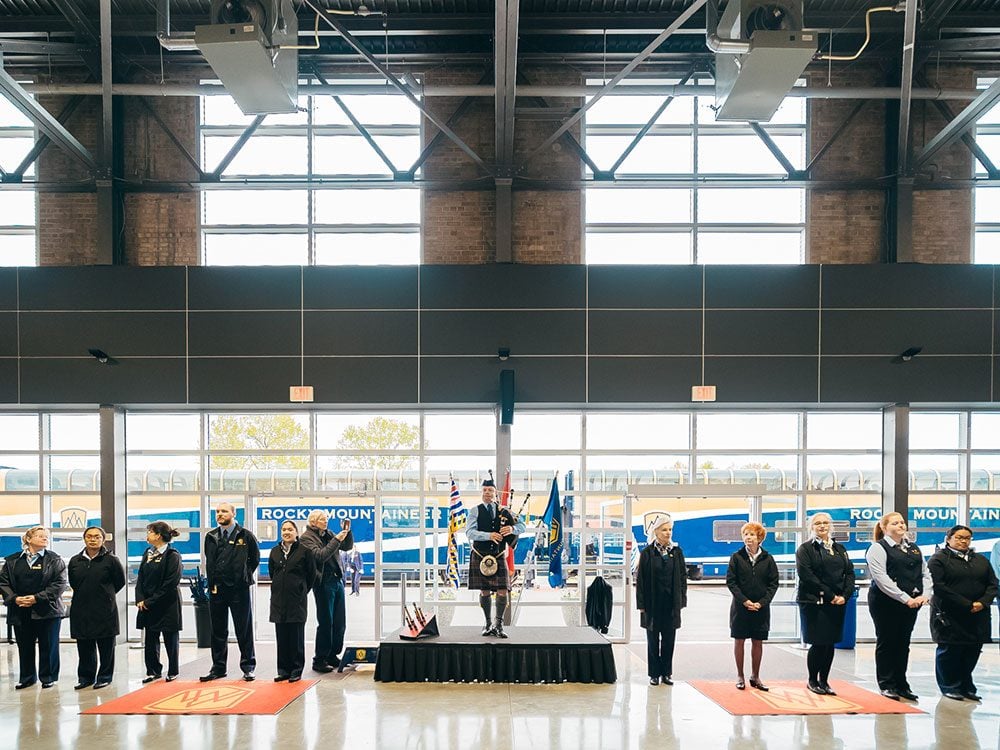
The Vancouver Station Send-Off
Best photo opp: Just before boarding Rocky Mountaineer
That’s right—you’ll need your camera even before the train pulls out of station in Vancouver. That’s where you’ll be treated to the unique sight of a Scottish piper performing in the half-light of the rising sun. The wailing notes make for an unforgettable welcome—and a truly irresistible photo opp.
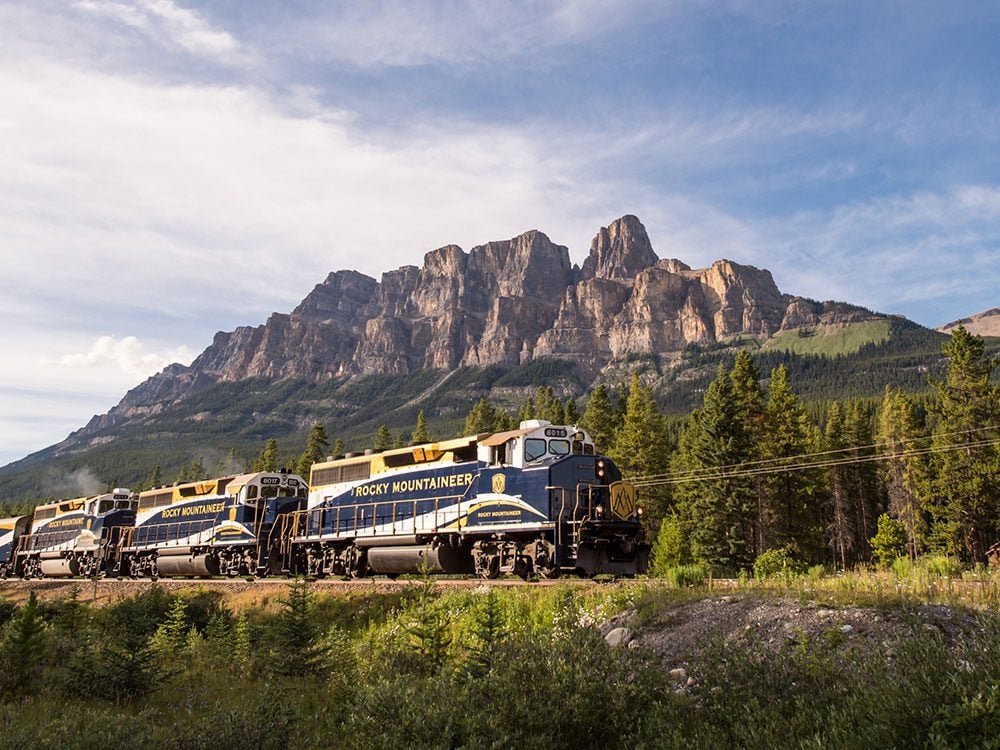
Castle Mountain
Best photo opp: Milepost 99, Rocky Mountaineer’s “First Passage to the West” route
With its distinctive, tower-like formations, there’s no mistaking this eminence on the outskirts of the Banff townsite. Noting that it “…looks exactly like a gigantic castle,” Dr. James Hector named this 2,766-metre mountain back in 1858. Visible from Milepost 97 to Milepost 105, look for the Eisenhower Green, a curiously grassy spot on near the summit named after the famous World War II general (and later U.S. president).
Here are the best things to do in Banff on your next visit.
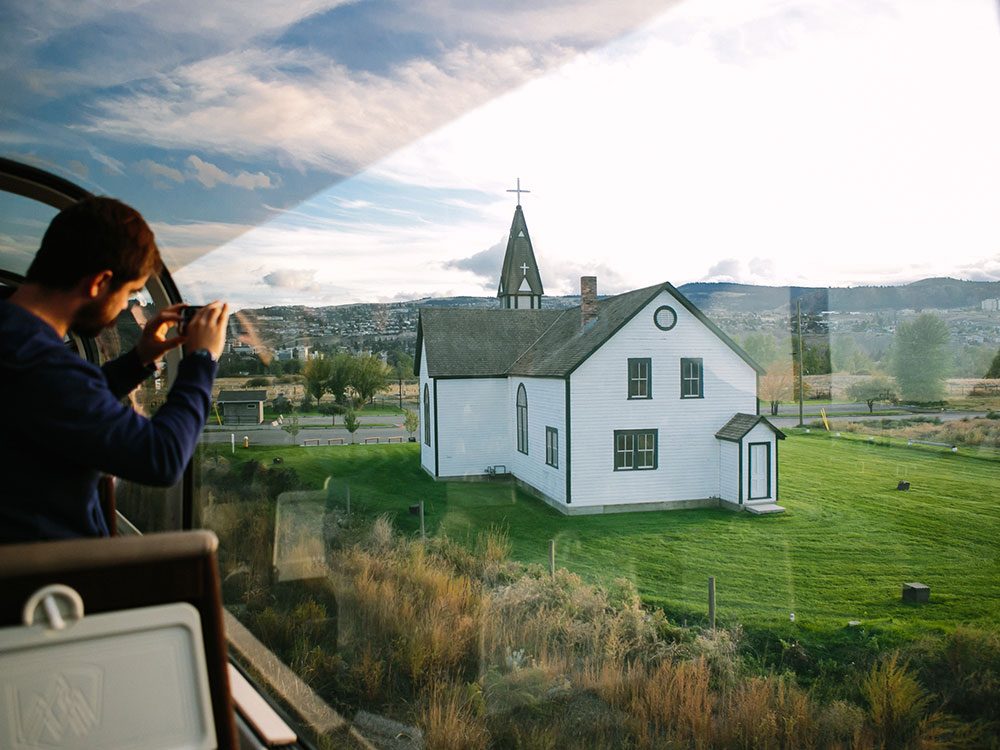
St. Joseph’s Catholic Church
Best photo opp: Milepost 1 from Kamloops, Rocky Mountaineer’s “Journey Through the Clouds” route
Not simply a picturesque place of worship, St Joseph’s Catholic Church just outside Kamloops, B.C., also has a historical significance that makes it worthy of capturing on camera. Focus in on the church’s graveyard to spot the natural stone monument (with a round plaque) to the wartime sacrifices of Indigenous people. The church itself has been honoured with a Hollywood close-up—it was featured in Clint Eastwood’s film Unforgiven, which won the Oscar for Best Picture in 1992.
Check out more must-see historical attractions across Canada.
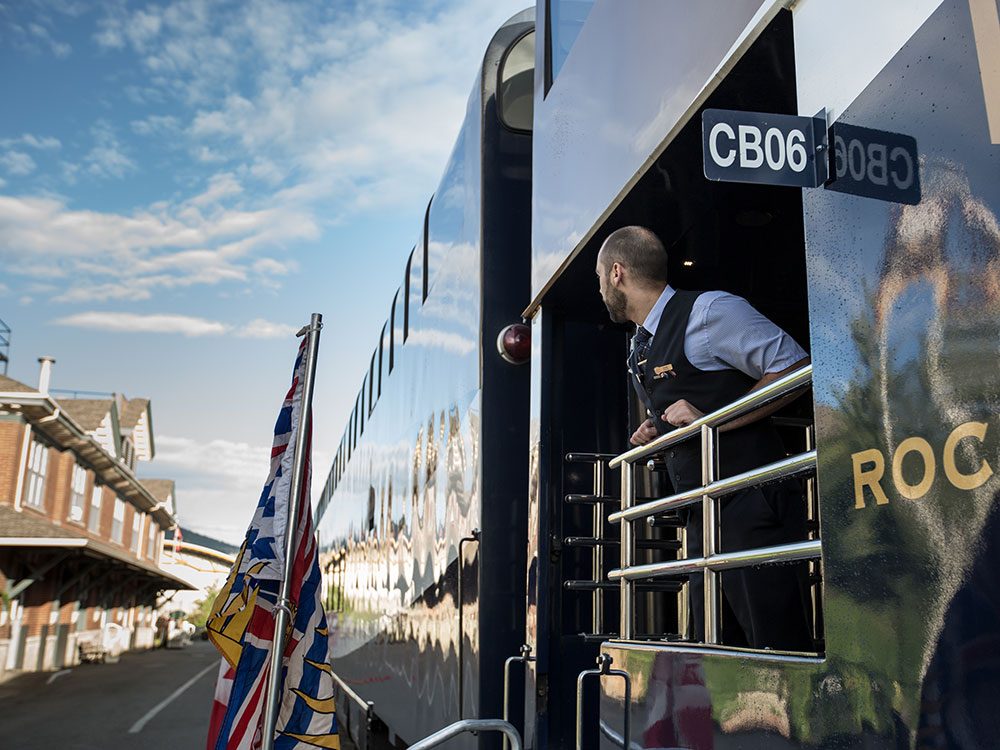
Sunrise at a Designated Heritage Railway Station
Best photo opp: Boarding in Kamloops, Lake Louise, Banff or Jasper
Whether it’s the day after an overnight stopover, your departure station or your destination, you’ll want to get a shot of these B.C. and Alberta railway stations themselves. These magnificent specimens of period architecture range from the stout and functional Kamloops railway station (shown here) to the impossibly romantic, rustic log-cabin style of Lake Louise railway station. Banff’s railway station, built in 1910, stands as a fine example of Arts-and-Crafts architecture.
Don’t miss this gallery of spectacular sunset pictures.
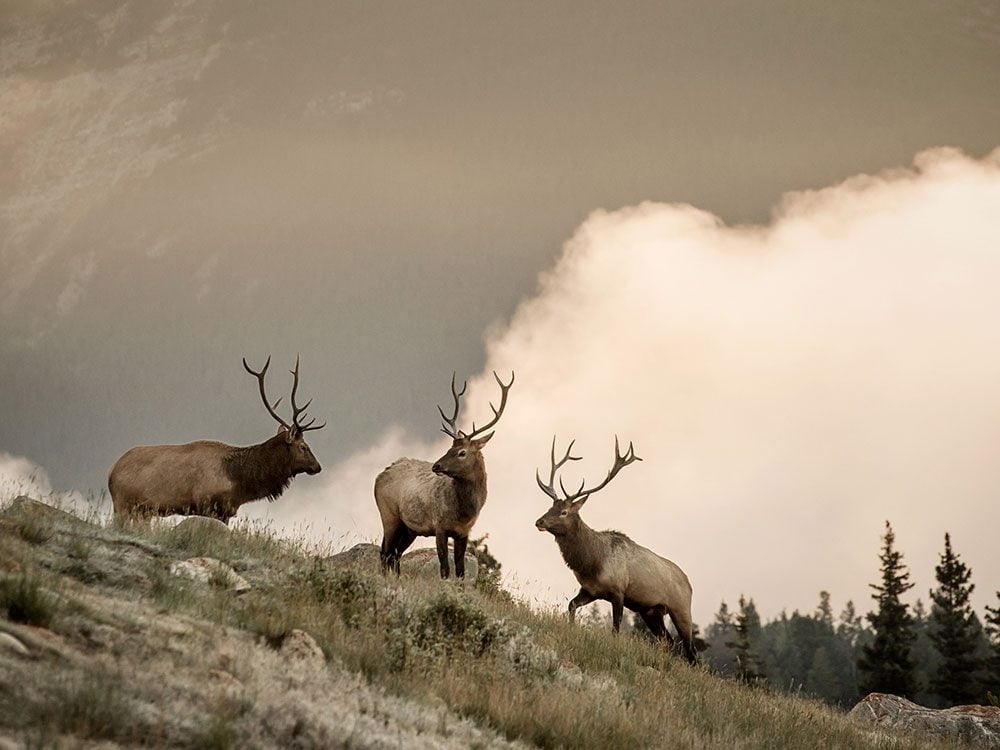
Rocky Mountain Wildlife
Best photo opp: Listen to your Rocky Mountaineer Hosts!
When riding the rails through the Canadian Rockies, wildlife can appear at any turn. Lucky for you, as a passenger onboard Rocky Mountaineer, you have the benefit of having an extra set (or coaches full of extra sets!) of expert eyes to give you as much advance notice as possible. Sitting in the best position to spot anything from elk to grizzly bears to bighorn sheep, the train engineers pass word onto the Hosts when something’s ahead so you can line up your camera for the perfect shot.
Explore the best wildlife experience in every province.
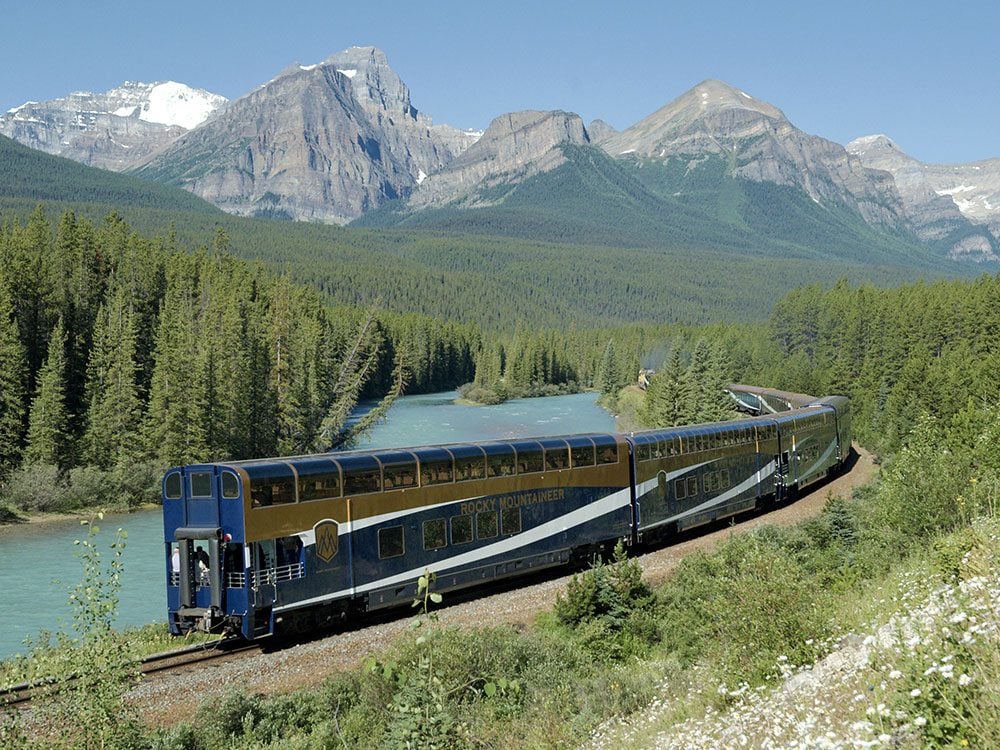
Morant’s Curve
Best photo opp: Milepost 113, Rocky Mountaineer’s “First Passage to the West” route
If this broad bend along the Bow River just outside Lake Louise looks familiar, it’s with good reason. In the middle of the 20th century, the scenic spot was a favourite subject of a Canadian Pacific Railway photographer by the name of Nicholas Morant, whose images of this stretch of the river (later named in his honour) were widely used in CPR promotional materials. Today, this area is also a favourite for rail fans who set up nearby in the hope of capturing photographs of the trains as they round the curve.
These gorgeous train photos pay tribute to Canada’s rich railroad history.
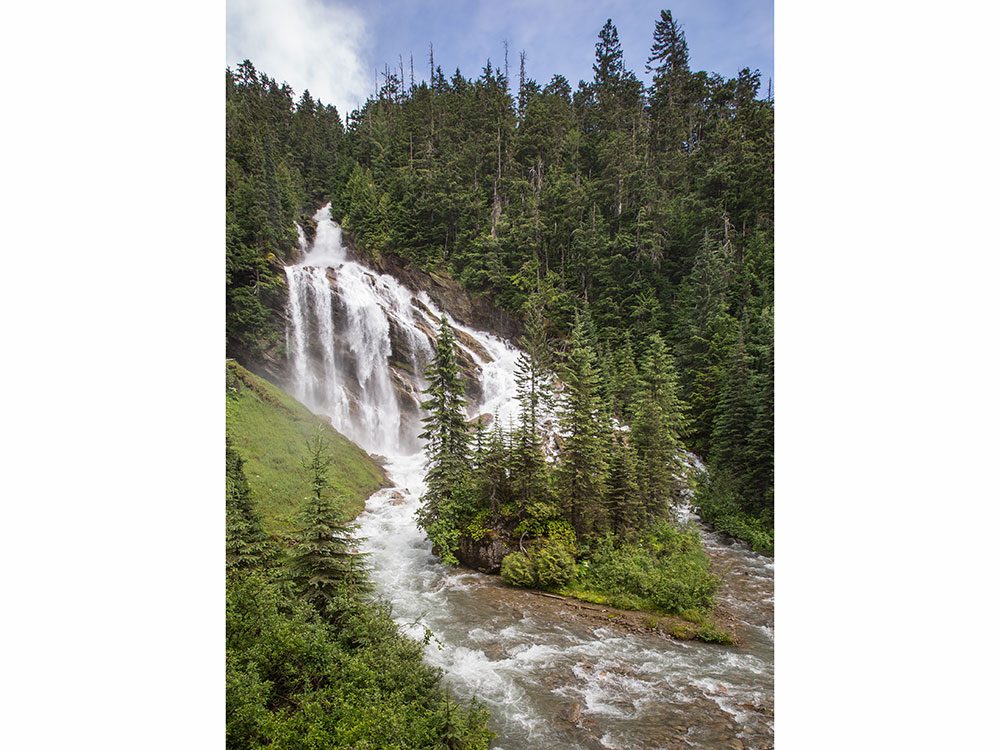
Pyramid Falls
Best photo opp: Milepost 113.8, Rocky Mountaineer’s “Journey Through the Clouds” route
Cascading down three stair-step tiers in a pattern that inspired its name, Pyramid Falls tumble a total of 90 metres before rolling under the rails that Rocky Mountaineer travels on to join the North Thompson River. It’s a view that you simply won’t get any way else. Photograph this rarely seen attraction from the coaches’ outdoor viewing platforms, but be prepared for a refreshing experience: Depending on the wind, you might feel the icy cold spray of the water, which flows from a glacier-fed lake high above. (In other words, be sure to bring a soft cloth to wipe down your camera lens!)
Check out more of Canada’s most beautiful waterfalls.
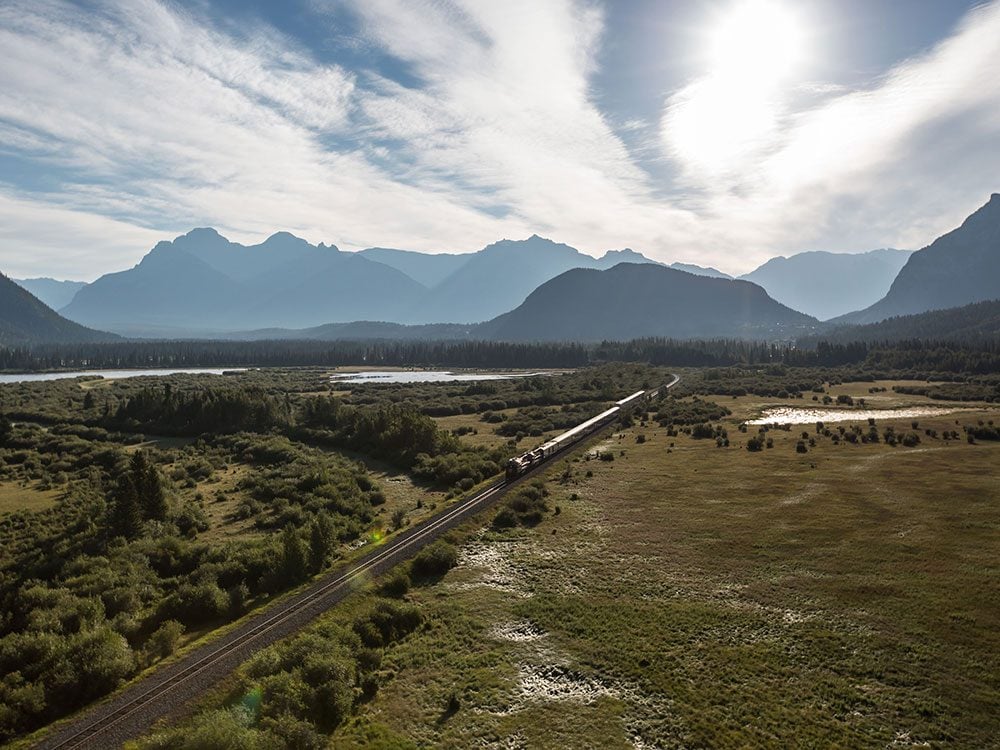
Vermilion Lakes
Best photo opp: Milepost 83, Rocky Mountaineer’s “First Passage to the West” route
Although the high peaks of the Canadian Rockies often steal the spotlight in Banff National Park, what lies at or below track level is often just as picturesque. Take Vermilion Lakes, for instance. This spectacular series of lakes and marshlands just outside of Banff are a favourite playground for town residents and tourists, who paddle in from Forty Mile and Echo Creeks and hike the trails that skirt their shores. It’s also an area that’s particularly rich in wildlife sightings, so keep an eye out for elk, beavers and even the occasional moose.
Take our tricky Canadian Rockies quiz to see how well you know these legendary peaks.

Lunching in Luxury
Best photo opp: Lunchtime onboard Rocky Mountaineer
While it’s difficult to turn your eyes (and your lens) away from the window and the scenery outside, you’ll need all your senses to focus on the gourmet meals served up in the lower-level dining area of Rocky Mountaineer’s bi-level, GoldLeaf Service coaches. Descend the spiral staircase, and feast your eyes on culinary pleasures like this spinach, feta and egg soufflé that are plated to perfection. (The hardest part is waiting to tuck in before capturing the perfect shot!)
Don’t miss this roundup of mind-blowing Canadian Rockies facts.
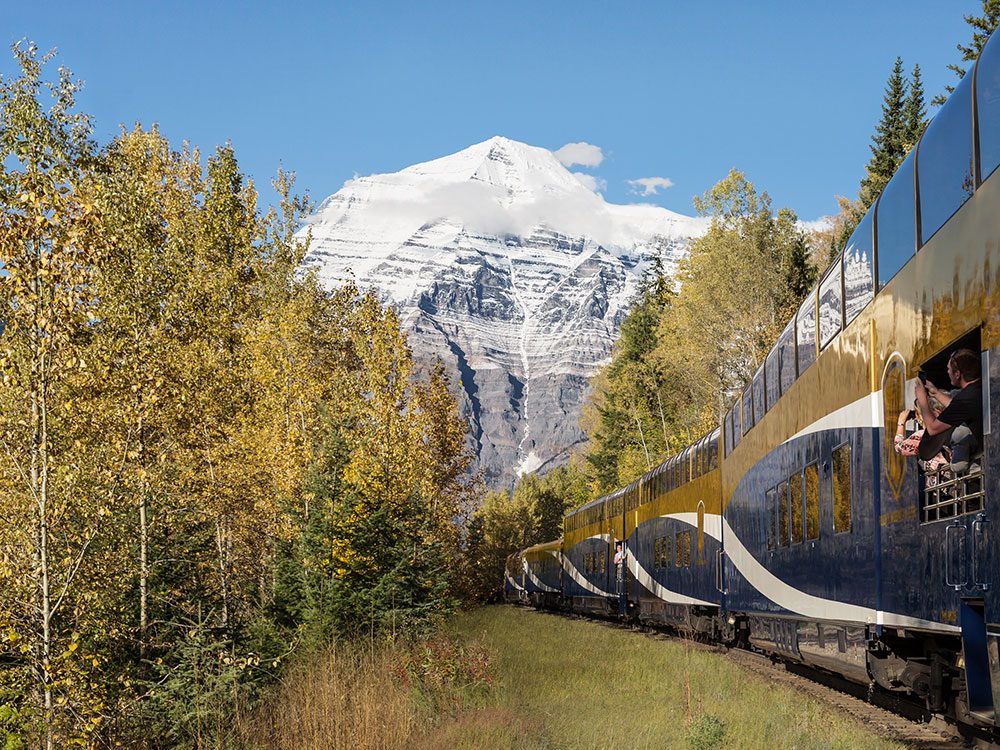
Mount Robson
Best photo opp: Milepost 11 (westbound); 52 (eastbound), Rocky Mountaineer’s “Journey Through the Clouds” route
The highest peak in the Canadian Rockies, Mount Robson’s 3,954-metre summit often disappears in a blanket of alpine clouds. Known to local Indigenous people as the “mountain of the spiral road to the afterlife,” its steep flanks have presented serious problems for mountain climbers. Risking ferocious weather and significant avalanche risk, it wasn’t ascended until 1913, when an Austrian-Canadian guide named Conrad Kain made it to the summit. Today, you can see it in all its glory as the train glides slowly past.
Find out what it’s really like travelling onboard Rocky Mountaineer.